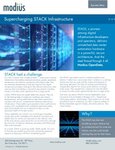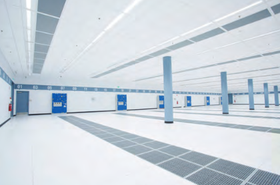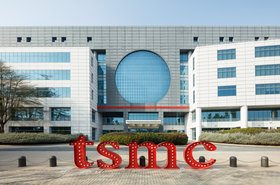It was great to read Peter Judge’s article, earlier this month, on our GCOST article (Limitations of linear GHG Protocol carbon reporting in achieving circular progress by Astrid Wynne and Rich Kenny at the 2023 International Conference on Lifecycle Management).
It advanced the idea that write-downs on carbon can encourage circular economy, giving us a more streamlined way of reporting. Peter linked to a podcast made with my co-author Rich Kenny, in which he described the process of taking a carbon value and writing it down over five years. Alongside this important issue, there is the discussion around the carbon footprint of new equipment, and how we assess this.
The publicity on this issue could not be timelier… Last week, the BBC ran an extended piece of coverage on climate change. We have now recorded a full year of global temperatures over the 1.5 degrees warming limit. The coverage featured the former chair of the UN’s climate body drawing a line between this, droughts, heatwaves, and wildfires.
There were comments on the resulting displacement of people. Those affected experienced increased economic insecurity, higher rates of human trafficking, and damage to families through substance misuse and domestic abuse.
The good news is that this is a year’s worth of data, not ten. This could be the wake-up call that inspires wide-reaching change, and that could start in small ways, such as agreements on how to measure, and build up to actions.
Carbon Capture on paper
Circular Economy is well recognized as a method of limiting climate change because it limits the production of new equipment and materials. Up to 80 percent of a product’s carbon footprint is in the manufacturing stage.
Measuring the carbon and material cost of our equipment is done through lifecycle assessment (LCA). This is done by disassembling products, looking at the material content, and giving each part of this an environmental weight. This is based on where and how they were sourced and what impacts these processes have.
Measuring impact using the LCA method involves drawing boundaries, making assumptions, and using estimates. These estimates are shared on platforms like EcoInvent, which give specialists shortcuts on materials and good ideas on how to fill gaps.
When you read reports from manufacturers, they will state where they assume the product was delivered, where it was assembled, how long it was in use, where the materials were mined, and potentially how and where it was destroyed. They need to do this because different locations will have slightly different sets of environmental risks. There are a lot of variables in play.
Because of this, there is wide variance between LCAs from different manufacturers of very similar products. For example, a carbon footprint for an HP server is very different from one for a very similar Dell server. Averaging out LCAs for whole product categories is tricky. It will depend on age, make, grade, and complexity as well as how it is put together, and where the boundaries are drawn.
However, if we are going to work towards integrating Circular Economy into GHG Protocol reporting, it’s something we need to do. We cannot write down carbon value until we pick a baseline number to agree upon.
Comparing like for like – or comparing progress?
The Greenhouse Gas Protocol reporting is not intended to compare one organization with another. It is a tool for measuring progress towards carbon reductions. This is why baseline years are important and why organizations need to be transparent about how they arrive at the figures.
With not much time left to achieve Net Zero, we are encouraged to arrive at a reasonable number and work from there. The challenge comes when buying choices are made on carbon footprints. It leads to competition between similar companies – and accusations of lack of transparency.
If we are going to resolve this, we need to pick a generic number that everyone agrees on, and work from there. We need a generic number for servers, one for networking switches, one for water-cooled chillers etc. This will mirror the averages we have for materials like grades of concrete or steel, which are already widely used. Manufactured items are more complex and have more variation, so the generic score will be less accurate, but we can take it as a starting point and work to improve as time goes on.
Manufacturers will have different views on the detail, which is why organizations like the Restart Project have worked on a Fixometer that lists averages based on published LCAs alongside repairability scores. Absolutely accurate? Not exactly. Workable to demonstrate the value of reuse? 100 percent.
The bigger picture
This article goes out to the data sector, a community that enjoys accurate detail and is reluctant to approximate. However, perfect is the enemy of good, as the old saying goes. In striving for 100 percent accuracy across each make, model, and type of equipment is going to be difficult and cause arguments. Plus, creating a system that works now has many more benefits than reductions in greenhouse gas emissions.
Making and wasting products can create water and land pollution, leading to effects on biodiversity. It also strips resources faster than they can be replenished. Gold mining, for example, has high water and carbon usage plus pollution risk, plus negative effects on the human respiratory system, leading to huge social risk. IT equipment also contains conflict minerals, produced by areas suffering from political instability where health, safety, and child labor regulations are immature.
Economists out there will be aware of supply chain security issues associated with IT hardware. The Critical Materials List in the US plots 35 metals and minerals against importance to energy and supply risk. Many of these are in IT hardware. The EU Critical Raw Materials Act from the EU Commission establishes a strategy for mitigating those risks. Its focus is a very similar Critical Raw Materials list for the EU.
What to do about all this
The data center sector is one of the largest buyers of IT hardware worldwide, so can do a lot for standardization and drawing actors together. Encouraging people to get around a table, and agree upon an initial carbon cost and a write-down period of that cost would be a great way to use that influence.
It does not have to be perfect, just workable.








